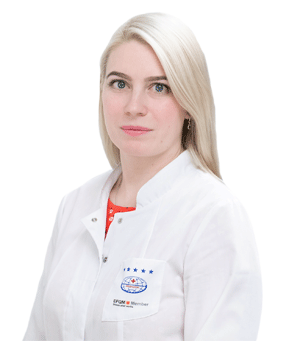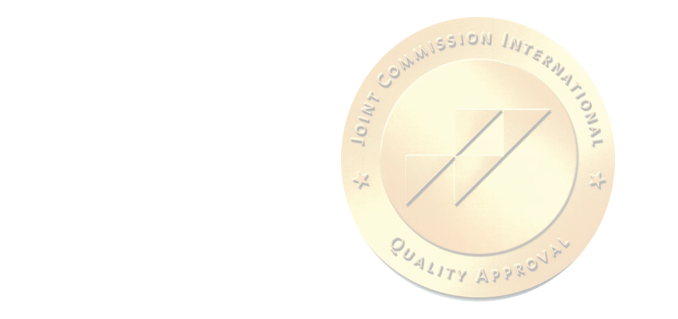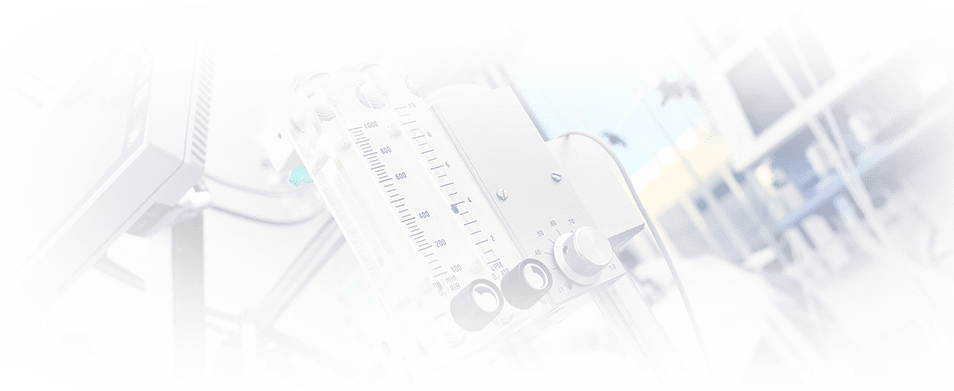Neuralgia in adults

Neurologist, Cabinet of Memory
Semenova Olga
Experience 4 year
neurologist, head of the office for diagnostics and treatment of cognitive disorders
Nerve endings are located throughout the body. In case of injury, infectious diseases, intoxication, metabolic disorders, pinching, inflammation or damage can occur. Neuralgia is a lesion of peripheral nerves with a characteristic paroxysmal pain and burning sensation. It is insidious in its manifestation, disguising itself as other diseases. At the time of an attack, it can be confused with osteochondrosis, renal colic, heart attack. Suddenly arising pains with neuralgia cause significant discomfort. The danger is a long-term state of the pathological process, which can lead to muscle atrophy. Attacks of excruciating pain can last from a few seconds to several minutes. You will not be able to help yourself with ordinary pharmacy painkillers. In this case, they are not able to have the proper impact.
Symptoms and signs of neuralgia
A common clinical manifestation is pain. Depending on the location, the type of disease is determined. The most common vertebrogenic, intercostal neuralgia (thoracalgia) in men and women, as well as the trigeminal nerve. The intensity of manifestation depends on the causes of the occurrence. Distinguish between primary and secondary in nature. They differ in their relationship with other states of the body. Primary (essential) neuralgia arises by itself due to mechanical damage to the nerve trunks. The secondary is not independent, developing as a side symptom from the underlying disease. Neuralgia symptoms are as follows:
- feeling of stiffness and muscle twitching;
- discomfort on palpation of the main site of pain;
- itching and burning before the onset of the attack;
- increased sweating in the armpit;
- the appearance and disappearance of unpleasant sensations;
- swelling and redness of the skin;
- changes in skin sensitivity.
Causes of neuralgia
Nerve neuralgia can appear for various reasons. Hypothermia and prolonged physical activity are in the lead. Together, all this leads to microtrauma of the nerve roots. In severe cases, the whole nerve trunk. Hence the different intensity of pain. Infectious toxins can be the cause. The use of strong alcoholic beverages is also in the group of provoking factors. Contact with lead, mercury, as well as taking certain medications have a negative effect on the nerve roots. Symptoms can manifest intercostal neuralgia at any time of the day, and the list of causes of its occurrence includes:
- inflammatory diseases of the musculoskeletal system;
- tumors of different etymology;
- the presence of diseases such as diabetes mellitus, atherosclerosis;
- violation of the blood supply to the nervous tissue and its hypoxia;
- hormonal disorders in the spine;
- colds (acute respiratory infections, flu);
- long stay in an uncomfortable position;
- surgical interventions in the area of the nerve, etc.
Risk factors for neuralgia
Risk factors are determined by the state of health and the reasons for the development of the pathological condition. For example, trigeminal neuralgia triggers its own mechanism due to its compression in the skull. And this is just one of the possible factors. The list also includes injuries to the skull and the jaw-temporal joint, congenital anomalies in bone development, diseases of the nervous system (multiple sclerosis, cerebral palsy, meningitis), and a lack of nutrients in the body. Age significantly increases the risks, although trigeminal neuralgia can appear similar to intercostal neuralgia in any person. Psychoemotional overload, stress, endocrine pathologies, chronic fatigue and helminthiasis - all this is also on the list of risk factors. Neuralgia symptoms can manifest themselves with a great deal of insidiousness, so do not underestimate it.
What complications can there be?
Any disease carries the potential danger of complications. There is always a risk, but in this case it is directly proportional to the efforts to eliminate the pathology that has arisen. With inflammation of the trigeminal nerve, you can lose hearing, get inflammation of the cerebellum, ataxia (damage to the nervous system), and paresis of the facial muscles. Intercostal neuralgia on the right and left of the symptoms is intense, so they cannot be ignored. From tolerable paroxysmal pains, the situation can radically move into another phase - a chronic one. Against this background, a person is constantly in a stressful state. Waiting for bouts of pain is no less exhausting than its actual manifestation. If neuralgia is not treated, a fatal complication can be a violation of respiratory function, up to a complete cessation of breathing.
When to see a doctor
If chest neuralgia, intercostal or other type occurs, do not waste time waiting for self-healing. It is easy to harm health, aggravate the situation, but to help eliminate the cause and consequences is not. If there are pains that cannot be dealt with with the help of painkillers, you need to contact a neurologist for medical help at JSC "Medicine" (Academician Roitberg's clinic) in the Central Administrative District. Inflammatory lesions are usually discolored and hot to the touch. Such phenomena must be stopped in order to prevent the destruction of the nerve trunks. Acute pain when probing the intercostal region, its intensification when coughing, inhaling and moving, signals a problem. Intercostal neuralgia requires qualified treatment.
Preparing to see a doctor
Neuralgia of the heart and back are not signs of their illness. The doctor will help to verify this. You don't need to prepare specifically. It is enough to tell the doctor about the state of health, the duration of the symptoms and their nature. If you have a history of any chronic illness or are currently undergoing treatment, prepare information about it. What kind of intercostal neuralgia symptoms and treatment has, the doctor will tell in more detail at the appointment.
Diagnosis of different types of neuralgia
A thorough examination is a prerequisite for the clinical manifestations of the disease. In the center of Moscow in JSC "Medicine" (the clinic of Academician Roitberg) there is all the necessary modern equipment for diagnostics, the latest research methods are used. First of all, it is necessary to exclude potentially possible heart attack, pneumonia, pneumothorax, osteochondrosis, etc. Diagnostic methods include the following positions:
- CT, MRI, or X-ray of the spine
- laboratory blood tests (general and biochemical);
- ultrasound diagnostics;
- myelography (determination of the condition of the nerve roots);
- magnetic resonance imaging of the vessels of the brain.
Treatment and basic methods
How to treat intercostal neuralgia is a question for a neurologist. There are two options: therapeutic and surgical. Drug treatment is the main method for suppressing pain syndrome and eliminating the causes of its occurrence. The task is to restore the function of the nerve. On the list of prescriptions: analgesics, non-steroidal anti-inflammatory drugs, muscle relaxants, anticonvulsants. Blockage of the inflamed nerve trunk may be required. It is performed by injection. Corticosteroids and anesthetics are injected directly into the desired location - neuralgia on the left or right side does not matter in this case. Surgical intervention is performed in the presence of tumors, anatomical defects, when there is a pronounced factor of root compression. Physiotherapy is used to influence and restore functionality: infrared heat, magnetotherapy, laser therapy. Neuralgia requires complex treatment, therefore it includes taking a course of B vitamins.
Home remedies
How to treat neuralgia at home is a self-medication that doctors may recommend to complement mainstream therapy. Traditional medicine suggests taking half a glass of medicinal chamomile decoction 3 times a day. It has anti-inflammatory and soothing properties for trigeminal nerve problems. If you are worried about the sciatic, you can apply fresh horseradish leaves to the sore spots. For the best effect, wrap it up with a warm scarf. Along with chamomile, you can take a decoction of mint 2 times a day for half a glass. The resulting left intercostal neuralgia will go away faster if self-massage is performed. The therapeutic effect can be supplemented by taking baths with sage. But remember that such events must be coordinated with your doctor.
Myths and dangerous misconceptions in the treatment of neuralgia
The most dangerous delusion is the ability to heal yourself. Neuralgia symptoms and treatment are medically interrelated. If you choose the wrong therapy, you can waste time and get a disease in the chronic stage.
Another misconception is that such pathologies appear in people over 40-50 years old. Indeed, age is a risk factor, yes, but everyone can fall under the influence of common causes. We are talking about banal hypothermia, stress, fatigue, weight lifting, etc.
Prevention of neuralgia
It is always easier to prevent a disease than to cure it - a well-known rule of medicine. Precautions consist in the timely access to a neurologist for any manifestations of the disease. There is neuralgia on the left or on the other side - the pain will be the same. Avoid hypothermia, avoid stress, and try not to exercise for a long period. Sports should be moderate. Considering that alcohol has a toxic effect on the body and health, try to minimize the dose. If desired and possible, give it up completely. Temper, adhere to a healthy diet, then chest neuralgia will not show symptoms.
How to make an appointment with a neurologist
How to treat neuralgia knows a neurologist at JSC "Medicine" (clinic of Academician Roitberg), you can make an appointment by phone: +7 (495) 995-00-33. For the convenience of patients, a feedback form is provided on the site. After leaving a request, you can take a call from the clinic to agree on a convenient appointment time.
Intercostal neuralgia is treated after the exclusion of serious life-threatening diseases, therefore, the consultation of a therapist or cardiologist may additionally be required.
The location of the clinic is convenient - the center of Moscow: 2nd Tverskoy-Yamskaya lane, building 10. Nearby are the metro stations "Mayakovskaya", "Belorusskaya", "Tverskaya", "Novoslobodskaya" and "Chekhovskaya". Take care of yourself and your health!




